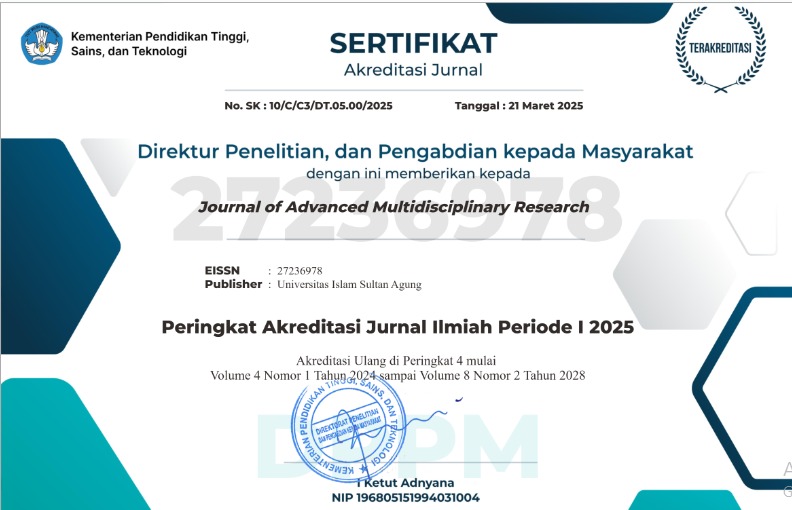Looking for Insights: A Comparison of Secondary Education English Curricula in Indonesia and Estonia
Abstract
Keywords
Full Text:
PDFReferences
Apple, M. W. (1993). The politics of official knowledge: Does a national curriculum make sense?. Discourse, 14(1), 1-16. Retrieved from https://www.tandfonline.com/doi/pdf/10.1080/0159630930140101
BBC News. (2015, March 2). Estonia's ruling Reform Party wins election victory. BBC News. Retrieved from https://www.bbc.com/news/world-europe-31681293
Birdsong, D. (1989). Metalinguistic performance and interlinguistic competence. Springer Science & Business Media (25), 145-147. Retrieved from https://link-springer-com.ezproxy.lib.monash.edu.au/content/pdf/10.1007%2F978-3-642-74124-1.pdf
Bygate, M. (2001). Speaking. In R. Carter & D. Nunan (Eds.), Teaching English to speakers of other languages (pp. 14-27). United Kingdom: Cambridge University Press.
Constitution of the Republic of Estonia [Estonia]. (1992). Available from https://www.refworld.org/docid/3ae6b56a4.html
Erss, M., Mikser, R., Löfström, E., Ugaste, A., Rõuk, V., & Jaani, J. (2014). Teachers’ views of curriculum policy: The case of Estonia. British Journal of Educational Studies, 62(4), 393-411. doi: 10.1080/00071005.2014.941786
Fausto, R. (2017, September 4). Sulitnya anak berkebutuhan khusus mendapatkan sekolah, perlunya memperluas jumlah sekolah inklusi. Femina. Retrieved from https://www.femina.co.id/family/sulitnya-anak-berkebutuhan-khusus-mendapatkan-sekolah-perlunya-memperluas-jumlah-sekolah-inklusi
Harmer, J. (2015). The practice of English language teaching (5th ed., Always learning). Harlow, England: Pearson Education.
Kelly, A.V. (2009). The curriculum theory and practice (6th). London: SAGE Publications Limited.
Kormos, J., & Kiddle, T. (2013). The role of socio-economic factors in motivation to learn English as a foreign language: The case of Chile. System, 41(2), 399-412. Retrieved from https://www.sciencedirect.com/science/article/pii/S0346251X13000523
Krull, E., & Mikser, R. (2010). Reflection of cross-curricular ideas in the Estonian curricula of general education: an historical study. Trames: A Journal of the Humanities & Social Sciences, 14(1), 34-53. Retrieved from https://www-ceeol-com.ezproxy.lib.monash.edu.au/search/viewpdf?id=115576
Laanemets, U., & Kalamees-Ruubel, K. (2014). Curriculum development: Content, context and language learning in Estonia. Euro-JCS, 1(1), 45-51. Retrieved from https://pages.ie.uminho.pt/ejcs/index.php/ejcs/article/view/15
Lamb, M. (2004). It Depends on the Students Themselves: Independent Language Learning at an Indonesian State School. Language, Culture and Curriculum, 17(3), 229-245. doi: 10.1080/07908310408666695
Lauder, A. (2010). The status and function of English in Indonesia: A review of key factors. Makara Hubs-Asia, 8(3), 9-20. Retrieved from https://hubsasia.ui.ac.id/index.php/hubsasia/article/view/128/82
LeapIN. (2016). 9 things you need to know before starting a company with Estonian e-Residency. LeapIN. Retrieved from https://blog.leapin.eu/9-things-you-need-to-know-before-starting-a-company-with-estonian-e-residency-cff0013f18fb
Lees, M. (2016). Estonian education system 1990-2016: reforms and their impact. Estonian Estonia: Estonian Ministry of Education and Research Adviser to the Minister MA of Educational Management.
Little, D. (2007). The Common European Framework of Reference for Languages: Perspectives on the making of supranational language education policy. The Modern Language Journal, 91(4), 645-655. doi: 10.1111/j.1540-4781.2007.00627_2.x
Marsh, C.J. & Willis, G. (2003). Curriculum alternative approaches, ongoing issues (3rd). United States of America: Merril Prentice Hall.
Mägi, E., & Nestor, M. (2014). Students with different mother tongue and cultural backgrounds in Estonian schools: attention, awareness and support at school level. Praxis Center for Policy Studies.
Menteri Pendidikan dan Kebudayaan Republik Indonesia [the Indonesian Ministry of Education and Culture]. (2016). Kompetensi dasar: Sekeloah Menengah Atas dan Madrasah Aliyah. Available from https://staff.uny.ac.id/sites/default/files/pendidikan/drs-sudarmaji-mpd/03-kompetensi-dasar-sma-2013.pdf
Menteri Pendidikan dan Kebudayaan Republik Indonesia [the Indonesian Ministry of Education and Culture]. (2016). Peraturan Menteri Pendidikan dan Kebudayaan Nomor 20 Tahun 2016 Tentang Standar Isi Pendidikan Dasar dan Menengah. Available from https://bsnp-indonesia.org/?page_id=105
Menteri Pendidikan dan Kebudayaan Republik Indonesia [the Indonesian Ministry of Education and Culture]. (2016). Peraturan Menteri Pendidikan dan Kebudayaan Nomor 21 Tahun 2016 Tentang Standar Isi Pendidikan Dasar dan Menengah. Available from https://bsnp-indonesia.org/?page_id=105
Menteri Pendidikan dan Kebudayaan Republik Indonesia [the Indonesian Ministry of Education and Culture]. (2016). Peraturan Menteri Pendidikan dan Kebudayaan Nomor 22 Tahun 2016 Tentang Standar Isi Pendidikan Dasar dan Menengah. Available from https://bsnp-indonesia.org/?page_id=105
Nishimura, S. (1995). The development of Pancasila moral education in Indonesia. Southeast Asian Studies, 33 (3), 303-316. Retrieved from https://repository.kulib.kyoto-u.ac.jp/dspace/bitstream/2433/56552/1/KJ00000131872.pdf
Putra, K. A. (2014). The implication of curriculum renewal on ELT in Indonesia. PAROLE: Journal of Linguistics and Education, 4(1), 63-75. Retrieved from https://ejournal.undip.ac.id/index.php/parole/article/view/6315
Organization for Economic Cooperation and Development (OECD). (2016). Educational policy outlook: Estonia. Retrieved from https://www.hm.ee/sites/default/files/education-policy-outlook-country-profile-estonia.pdf
Schwartz, S. H. (1999). A theory of cultural values and some implications for work. Applied psychology, 48(1), 23-47. doi: 10.1111/j.1464-0597.1999.tb00047.x
Rechards, J. C. (2005). Communicative language teaching today. Singapore: SEAMEO Regional Language Center.
Regulation No. 1 of the Government of the Republic of Estonian National Curriculum for Basic Schools. (2014). Available from https://www.hm.ee/et
Resh, N., & Benavot, A. (2009). Educational governance, school autonomy, and curriculum implementation: diversity and uniformity in knowledge offerings to Israeli pupils. Journal of Curriculum Studies, 41(1), 67-92. Retrieved from
Suhartono, (2013). Analisis perbedaan kurikulum KTSP dan kurikulum 2013. Retrieved from https://www.slideshare.net/6285731664322/analisis-perbedaan-kurikulum-ktsp-dan-kurikulum-2013?from_action=save
Tedesco, J. C., Opertti, R., & Amadio, M. (2014). The curriculum debate: Why it is important today. Prospects, 44(4), 527-546.
Tse, D. K., Lee, K. H., Vertinsky, I., & Wehrung, D. A. (1988). Does culture matter? A cross-cultural study of executives' choice, decisiveness, and risk adjustment in international marketing. The Journal of Marketing, 81-95. Retrieved from https://www.jstor.org.ezproxy.lib.monash.edu.au/stable/pdf/1251635.pdf?refreqid=excelsior%3Af02f43a01b62a93ab27cab86feda612a
Wicaksono, P. (2014, August 24). Guru Khawatirkan kurikulum 2013 ganggu sertifikasi. Tempo. Retrieved from https://nasional.tempo.co/read/601897/guru-khawatirkan-kurikulum-2013-ganggu-sertifikasi
Widianti, U., Rohmah, Z., & Furaidah. (2017). Bahasa Inggris SMA/MA/SMK/MK kelas X. Retrieved from https://www.gurupembelajar.net/2017/08/download-buku-kurikulum-2013-edisi.html
Yates, L. & Grumet, M. (Eds.). (2011). Curriculum in Today’s World: Configuring Knowledge, Identities, Work and Politics. London, UK: Routledge.
DOI: https://dx.doi.org/10.30659/jamr.4.2.76-89
Refbacks
- There are currently no refbacks.
Copyright (c) 2023 Berli Arta, Adhan Kholis, Rahayu Rahayu, Ulul Azmi, Khusnul Harsul Lisan
Journal of Advanced Multidisciplinary Research (JAMR) is published by Research and Community Service Department (LPPM) Universitas Islam Sultan Agung Semarang, Indonesia.
Address: Jl. Kaligawe Raya Km. 4 Semarang, Indonesia.






